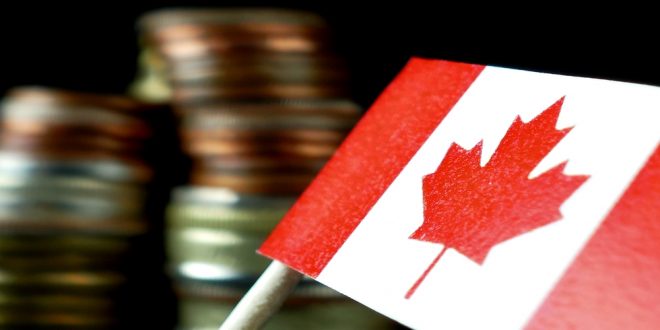The Bank of Canada has been slammed by critics after misjudging inflation and locking itself into rigid forward guidance that prevented it from reacting swiftly as prices surged and Canada’s economy began to overheat.
THE Canadian dollar dips 0.1% against the US dollar. Flash estimate shows factory sales falling 2.5% in May. So far, the Canadian dollar edged lower against its US counterpart on Thursday as investors weighed the risk of a global economic slowdown and preliminary domestic data showed factory sales falling in May.
The Canadian dollar was down 0.1% at 1.2956 to the US dollar, or 77.18 US cents, after trading in a range of 1.2937 to 1.2987. Purchasing managers’ data showed a loss of economic momentum in some major European economies. Investors are concerned that interest rate increases to quell decades-high inflation will tip economies into recession.
The price of oil, one of Canada’s major exports, edged higher after earlier falls as investors weighed the risks of recession and how fuel demand will be affected by rising interest rates and tight supplies. US crude prices were up 0.2% at $106.35 a barrel. Canadian factory sales fell 2.5% in May from April, largely driven by lower sales in the motor vehicle and primary metal industries, Statistics Canada said in a flash estimate.
A preliminary estimate for wholesale trade was more upbeat, showing a 2.0% increase in May. Money markets expect the Bank of Canada to raise interest rates by three quarters of a percentage point next month after data on Wednesday showed inflation jumping to its highest in nearly four decades. The central bank has come under a rare attack from critics after misjudging inflation and locking itself into rigid forward guidance that prevented it from reacting swiftly as prices surged and Canada’s economy began to overheat.
Canadian government bond yields were lower across the curve, tracking the move in US Treasuries. The 10-year eased 12.2 basis points to 3.299%, its lowest level since June 10. The Bank of Canada is due to auction 10-year bonds on behalf of the Government of Canada, with the bidding deadline at 12 p.m. ET (1600 GMT). (Reporting by Fergal Smith Editing by Mark Heinrich)
As one of the world’s leading central banks, BoC is now forced to play catch-up, hiking interest rates more aggressively than originally expected just as Canadian household debt levels hit new highs, surging far above other G7 nations.
With a possible recession looming, the bank is facing questions from politicians, economists and even the general public about the opacity of its decision-making process and renewed calls for it to release minutes, a common practice among many of its peers.
For its part, the BoC has admitted missteps and is promising more transparency, including an analysis of inflation forecast errors, due in July. But it still faces near daily attacks by politicians including Pierre Poilievre who accuses the central bank of being both incompetent and a government puppet. Poilievre also pledged to fire Governor Tiff Macklem if elected, a move that would require changing the law but that nevertheless underscores the level of discontent.
The Bank of Canada, which is independent in setting policy, has not faced this level of political heat since the early 1990s, when then-Liberal opposition leader Jean Chretien railed against Governor John Crow over his high-interest rate policy.
Poilievre, not yet an opposition leader, is unlikely to become prime minister before 2025, when the next election is due. But his attacks come at a time when public trust that the central bank will curb inflation is vital for the economy.
The Bank of Canada, like many other central banks, held that inflation was “temporary” or “transitory” into the fall of 2021, and did not start raising rates until March 2022, when inflation was already more than double the 2% target.
Prices are now rising at levels not seen since 1983, hitting 7.7% in May, and above target for 15 months. With the price of everyday essentials surging, the risk of inflation becoming entrenched is growing.
The slow start came in part because the bank locked itself into forward guidance in July 2020, promising to keep interest rates at rock-bottom levels until “the economic slack is absorbed,” which was expected to take years.
But doing so tied the bank’s hands and forced it to react more slowly than it typically would have as parts of the economy overheated, according to interviews with economists and a former central banker.
Macklem also signaled he wanted a full labor market recovery before raising rates, which was later confirmed when the bank’s policy mandate was renewed in December, creating an even more dovish outlook for rates.
David Dodge, Bank of Canada governor from 2001 to 2008, said Canadians were led to believe the central bank was not overly worried about inflation and therefore would hold interest rates “at essentially zero forever, come hell or high water.”
Dodge and others made it clear the central bank was correct to respond forcefully at the onset of pandemic and said the unprecedented nature of the crisis made outcomes difficult to predict. Trudeau and Finance Minister Chrystia Freeland have defended the central bank’s independence and attributed surging prices to global supply chain woes and the unexpected war in Europe.
“Nobody gets everything right,” said a senior government source. “But what the BoC didn’t get right was that Putin was going to invade Ukraine.” Economists agree the war in Ukraine complicated the situation and drove inflation sharply higher, though it was already becoming persistent before the invasion. Complicating the situation, the central bank is now raising rates even as the federal government continues to unroll stimulus.
Freeland’s office defends that choice, saying this year’s budget is on “a path of swift fiscal tightening – particularly by the standards of our peers,” a ministry spokeswoman said.
With markets betting on a 75-basis-point increase in July, economists say the aggressive tightening risks undermining the bank’s credibility with a public promised cheap money but now facing surging debt servicing costs. Canada’s once red hot housing market is already showing cracks from higher interest rates, with sales plunging and prices falling off February’s peak.
One way to win back public trust is to release minutes of central bank meetings. The Bank of Canada says that it is consensus-driven, so if that is really true in reality, then they should have absolutely no problem disclosing how this consensus was achieved.
For its part, the Bank of Canada says the fact it takes decisions by consensus is exactly why it does not need formal minutes, and that its quarterly monetary policy report statements bring transparency to the deliberations.

 Noor Trends News, Technical Analysis, Educational Tools and Recommendations
Noor Trends News, Technical Analysis, Educational Tools and Recommendations




